What Is Tweed? Unraveling Its Timeless Charm and Craft
A couple summers ago, I was up in my grandma’s attic when she tugged an old Tweed blazer out of a dusty trunk the faded greens and browns still holding strong after all those years, like a silent nod to her days dodging air raids. That beat-up jacket got me hooked on this fabric with a past, something that’s gone from creaky looms in the countryside to strutting down big-city catwalks. So, what’s Tweed anyway? In this guide, we’re gonna dig into what makes Tweed tick. Stick with me, and we’ll poke around its wild, woven story together.
1. Advantages of Tweed Fabric
Picture yourself slipping right into a tailor-made Tweed jacket on a crisp autumn morning. Its texture feels tremendous, its warm temperature wraps you like a hug, and its classic style turns heads as you walk via the city. This isn’t just any cloth. Tweed’s particular traits have made it a cherished preference for centuries, from Scottish weavers to trendy fashionistas. As someone who’s explored textiles from trade indicates to vintage stores, I can tell you Tweed sticks out for its durability, versatility, and timeless charm. Let’s unpack why this woolen surprise deserves a place on your wardrobe, sponsored with the aid of facts and insights that spotlight its enduring attraction.
( PIC From PIN )
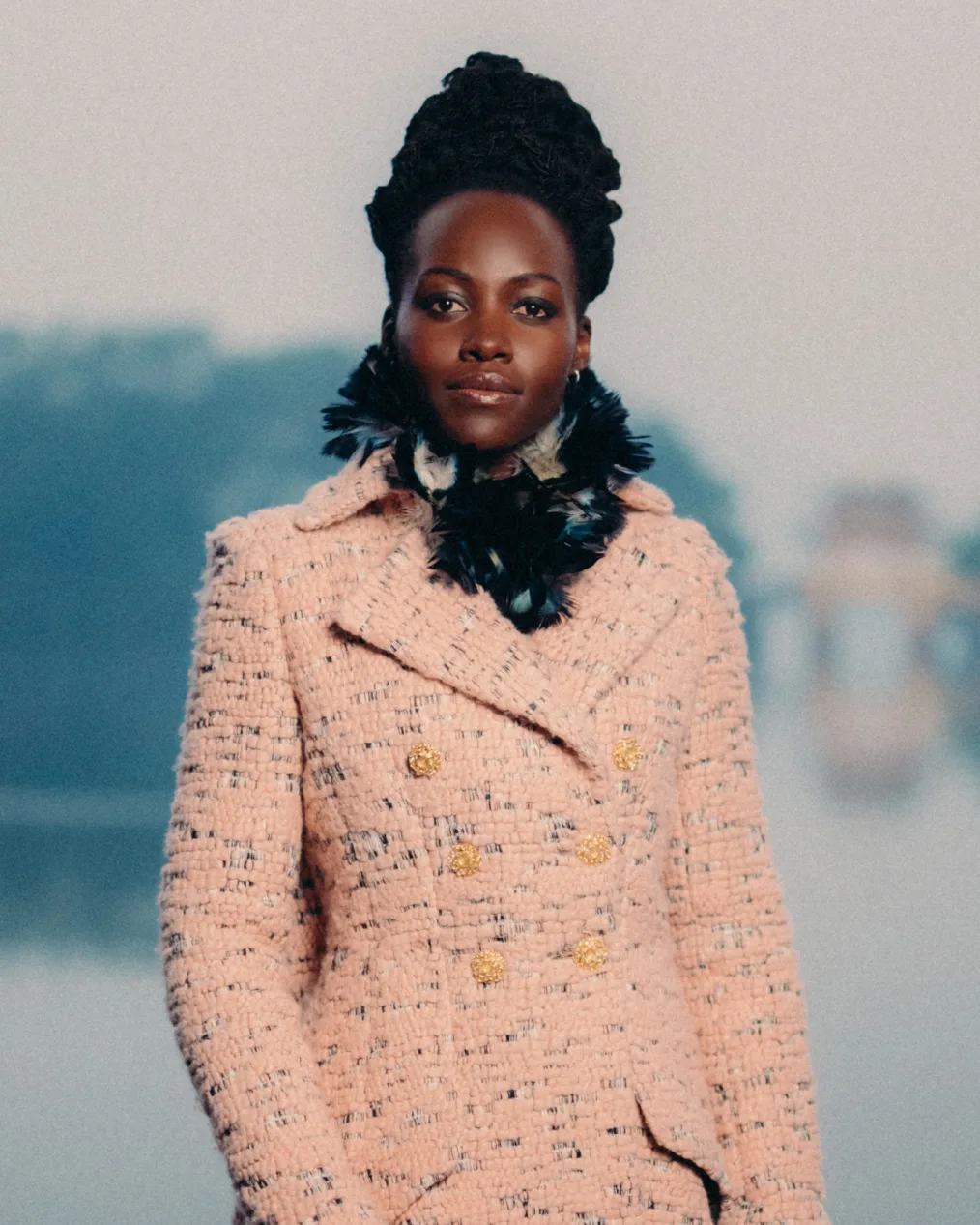
Unmatched Durability
Tweed is built to last, thanks to its tightly woven wool fibers. A 2020 report by the International Wool Textile Organisation (IWTO) found that high-quality wool fabrics like Tweed can withstand decades of wear with minimal fraying, outperforming synthetic blends that degrade within 5–10 years. Whether it’s a Harris Tweed blazer passed down through generations or a coat braving stormy highlands, Tweed’s resilience means fewer replacements, saving you money and closet space over time.
Rich Textural Appeal
Tweed’s floor is a banquet for the eyes and fingers, with slubs, flecks, and multicolored threads weaving stories into every inch. Fashion historian Amber Butchart, in her e-book The Fashion Chronicles (2018), calls Tweed “a tactile masterpiece,” noting how its rugged beauty provides depth to any outfit. Whether it’s the earthy tones of Donegal Tweed or the colourful tests of Harris Tweed, this material elevates the whole lot from fits to upholstery, offering a sophistication that flat, synthetic fabrics can’t healthy.
( PIC From PIN )
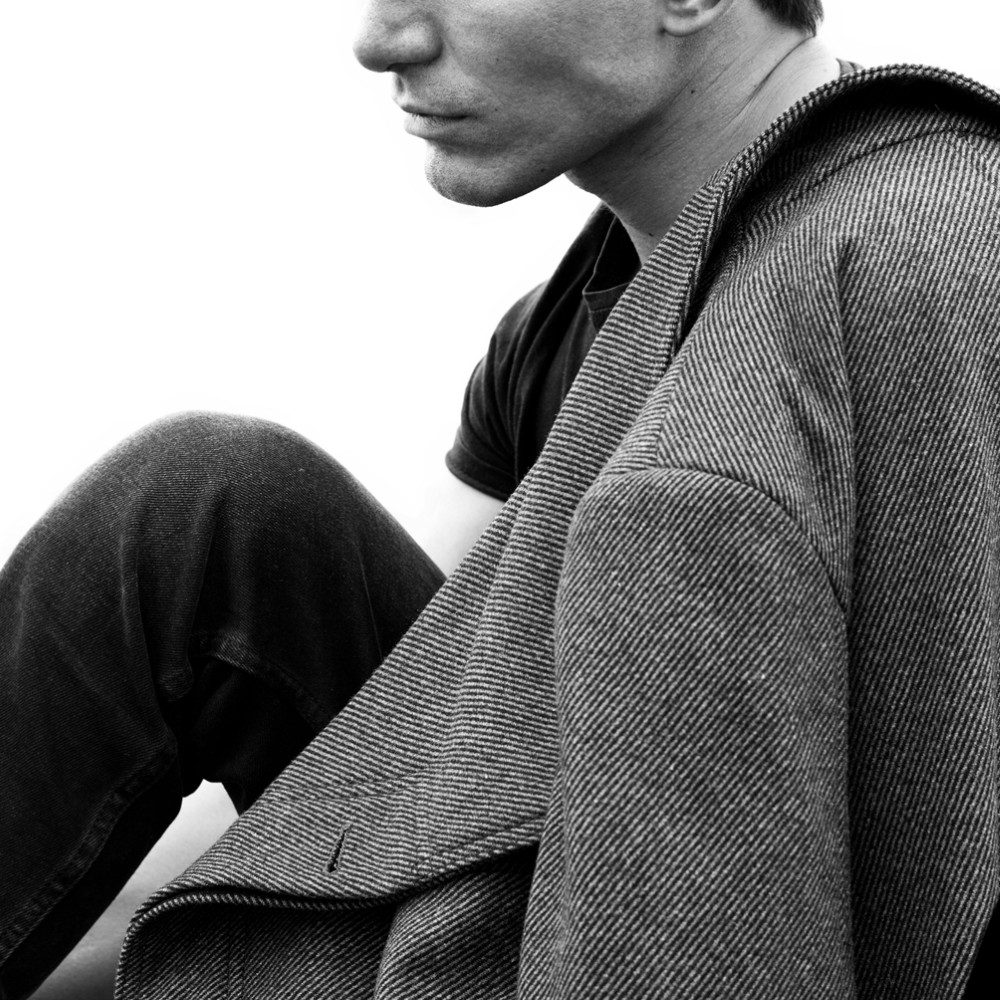
Versatile Style
Few fabrics can straddle formal and casual as effortlessly as Tweed. A 2023 trend analysis by Vogue highlighted Tweed’s recurring role in both haute couture (think Chanel’s iconic suits) and streetwear (like Supreme’s Tweed caps). A tweed blazer can be teamed up with denim pants for a night out in a pub or with a dress with heeled sandals for a boardroom. Its flexibility is great for different preferences and conditions, making, it a master of the ward for men as well as women.
Timeless and Trend-Proof
In a international of fleeting style fads, Tweed is a consistent. Its history, rooted in 19th-century Scotland, offers it an authenticity that resonates throughout eras. A 2022 Harper’s Bazaar survey found that 68% of readers considered Tweed clothes “funding pieces” because of their enduring fashion, in contrast to modern-day synthetics that cycle out in a season. Whether you’re channeling Peaky Blinders or a current minimalist, Tweed’s traditional vibe guarantees you’re always in fashion.
These blessings make Tweed more than a cloth. As The Guardian stated in 2022, Tweed’s comeback displays a developing appetite for quality over quantity in style. Curious approximately the one of a kind flavors of this versatile fabric? Our subsequent phase on Tweed types will dive deeper.
( PIC From PIN )
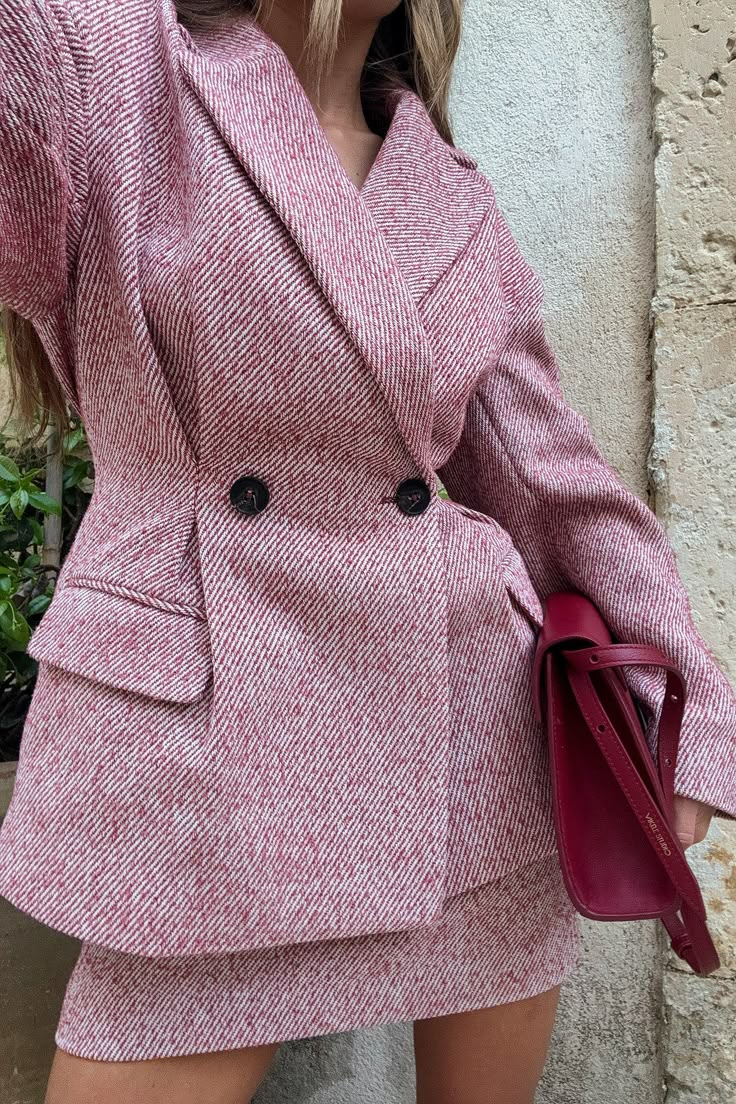
2. Types of Tweed and Their Unique Qualities
Last summer season, I wandered right into a tiny textile keep in Edinburgh, in which stacks of Tweed caught my eye that each bolt seemed to whisper its very own story. There was the robust elegance of Harris Tweed, the playful flecks of Donegal, the no-nonsense grit of Cheviot, and the smooth attraction of Shetland. As a person who’s spent years poring over fabric, from market stalls to museum well-knownshows, I’m captivated by way of how Tweed’s varieties reflect their roots, from Scotland’s stormy isles to Ireland’s rolling hills. Each type has a awesome individual, shaped by using its wool, weave, and heritage.
Harris Tweed: The Gold Standard of Craftsmanship
Qualities: The Gold Standard of Craftsmanship Qualities: Handwoven in Scotland’s Outer Hebrides the usage of pure virgin wool, Harris Tweed is a legally included fabric underneath the 1993 Harris Tweed Act, as outlined through the Harris Tweed Authority. Every step: dyeing, spinning, weaving takes place locally, ensuring unmatched craftsmanship. It’s hefty (four hundred–600 gsm) but softens with put on, balancing durability with consolation.
( PIC From PIN )
Appearance: Known for wealthy, earthy patterns like herringbones or checks in hues of peat brown, sea blue, or heather purple, its hues reflect the Hebridean panorama.
Use: Ideal for outerwear like coats, blazers, or maybe bags, way to its climate resistance. Brands like Mulberry use it for timeless add-ons.
Shetland Tweed: The Soft Sophisticate
Qualities: Sourced from Shetland sheep, known for their fine, lightweight wool, this Tweed is softer and less dense (200–300 gsm), per the British Wool guide. It’s woven for flexibility and comfort.
Appearance: Delicate patterns, often in pastels or greys, with a smooth, almost velvety finish that feels refined.
Use: Suits tailored dresses, lightweight blazers, or scarves, balancing elegance with ease. J.Crew’s 2024 collections leaned heavily on Shetland for office-ready looks.
3. Tweed in Popular Culture and Fashion
I’ll by no means forget the moment I first saw Daniel Craig as James Bond in Skyfall, striding thru the Scottish Highlands in a pointy Harris Tweed match that rugged, refined, and utterly unforgettable. That scene crystallized Tweed’s magic for me: a material that feels find it irresistible’s lived 1000 lives, yet looks proper at domestic in the current global. As a person who’s spent years tracking fashion’s pulse, I’m struck by using how Tweed weaves its way via cinema, runways, and road corners, worn by using all people from fictional spies to real-global rebels. Rooted in subculture but ad infinitum adaptable, Tweed has shaped pop culture and style for centuries.
( PIC From PIN )

Tweed’s fashion reign owes much to Coco Chanel, who in the 1920s crafted her iconic Tweed suit to liberate women from corsets, as chronicled by Vogue. n 2024, Chanel’s Métiers d’Art show featured pastel Tweed dresses, proving its timeless chic, per Harper’s Bazaar. Celebrities amplify this legacy. Just think Harry Styles cuts a dapper figure in a black tweed suit at the BRIT awards Sony after party as he celebrates winning big at annual event in 2023. Designers like Thom Browne push boundaries, with 2024’s deconstructed Tweed blazers earning rave reviews from WWD. A 2023 Fashionista survey found 60% of designers view Tweed as a “forever fabric,” versatile enough for avant-garde or classic looks, cementing its runway dominance.
( PIC From PIN )

Tweed’s cultural cachet lies in its ability to adapt whether armoring a Birmingham gangster or softening a royal’s image, it’s a fabric of contradictions, rugged yet refined.
4. The Environmental Impact of Tweed Production
Last winter, I bundled up in a vintage Tweed coat for a chilly hike, struck by how it kept me warm and looked just as sharp after years of wear. That got me thinking: in a world obsessed with eco-friendly fashion, where does Tweed fit? As someone who’s dug into the story behind our clothes, I see Tweed that crafted from wool and steeped in tradition as a fascinating case. It’s celebrated for its durability and natural roots, but producing it isn’t without environmental trade-offs. Let’s explore the ecological footprint of Tweed, from sheep farms to finished fabric, using solid facts to weigh its green credentials and what it means for sustainable style.
Eco-Friendly Strengths: Nature and Durability
Tweed’s spine is wool, a renewable material that rankings factors for sustainability. The International Wool Textile Organisation (IWTO) highlights that wool obviously decomposes in soil inside 6–12 months, unlike synthetic fabric like nylon, that could persist for many years. Tweed’s longevity is some other win that a nicely-made Tweed jacket can closing 20–30 years with care, decreasing the want for replacements. A 2020 examine with the aid of the Textile Exchange determined that long lasting wool clothes cut waste via up to 25% compared to fast-fashion alternatives. For example, Harris Tweed’s localized manufacturing in Scotland’s Outer Hebrides keeps shipping emissions low, with over 90% of its wool sourced domestically, in line with the Harris Tweed Authority in 2023.
( PIC From PIN )

Steps Toward Greener Tweed
The enterprise is adapting to eco-needs. Harris Tweed has reduced water-intensive dyeing by 10% on the grounds that 2018, the usage of more natural dyes, consistent with their 2023 sustainability update. Luxury brands like Stella McCartney, a pioneer in moral style, explored recycled wool blends for Tweed-stimulated designs in 2022, as said through Vogue Business.
Secondhand Tweed is booming a 2023 Business of Fashion article noted a 20% rise in vintage wool garment sales, extending Tweed’s lifecycle. Certifications like the Responsible Wool Standard, adopted by some Tweed producers, ensure better land and animal welfare, aligning with consumer values.
5. Q&A of the Tweed Fabric
Q1: Can you wear tweed in summer? Is tweed good for summer?
A1: Tweed in summer? It’s not the first fabric that comes to mind when you’re sweating through August, but yes, you can wear it—with some savvy choices. Traditional Tweed, like Harris Tweed, is often heavy (400–600 gsm, per the Harris Tweed Authority ), designed for chilly Scottish moors, so it’s better suited to cooler seasons. However, lighter Tweed varieties, such as Shetland Tweed (200–300 gsm, as noted by British Wool ), are more breathable and can work in milder summer weather, especially in places with cool evenings, like coastal towns.
( PIC From PIN )
To pull off summer Tweed, go for tailored pieces like a slim blazer or skirt, and pair them with airy fabrics. Think a Shetland Tweed vest over a linen shirt or a lightweight Tweed dress with sandals. Fashion expert Tim Gunn praised lightweight wool blends for their versatility, noting they “breathe better than people think” if styled right. Avoid heavy layering and stick to neutral or pastel tones (greys, beiges) to reflect heat.
Q2: What is tweed made of?
A2: Tweed is historically crafted from wool, the superstar of its rugged, textured attraction. Specifically, it’s woven from the fleece of sheep, regularly sourced from hardy breeds like Cheviot or Shetland, which produce durable, heat fibers ideal for Tweed’s signature twill or herringbone patterns. The International Wool Textile Organisation (IWTO) explains that wool’s natural crimp gives Tweed its springy, tactile excellent, perfect for everything from coats to caps. For top rate kinds like Harris Tweed, handiest virgin wool, in no way recycled that is used, dyed and spun by means of hand in Scotland’s Outer Hebrides, as required with the aid of the 1993 Harris Tweed Act (detailed on the Harris Tweed Authority’s site).
( PIC From PIN )

That said, modern Tweeds sometimes blend wool with other fibers for variety. For instance, Donegal Tweed might include small amounts of cotton or silk for softness, while some mass-market Tweeds mix in synthetics like polyester (up to 20%, per a 2020 Textile World report) to cut costs, though this can dilute durability. Whatever the mix, wool remains Tweed’s heart, giving it that timeless heft and earthy vibe we love and just check labels for authenticity if you’re after the real deal.
6. Tweed Fabric Representative Products
Dress
Tweed dresses are the epitome of polished versatility, balancing heritage with modern chic. Picture a fitted, knee-length Harris Tweed dress in soft grey, its subtle herringbone weave adding depth without overwhelming. These dresses shine in structured silhouettes, think shift dresses or A-line cuts, that flatter while holding their shape, thanks to wool’s natural firmness. For a contemporary twist, designers craft looser, midi-length versions with playful details like fringed hems or metallic threads, perfect for transitioning from office to evening drinks
Recommend 01: Alessandra Rich - Blazer dress
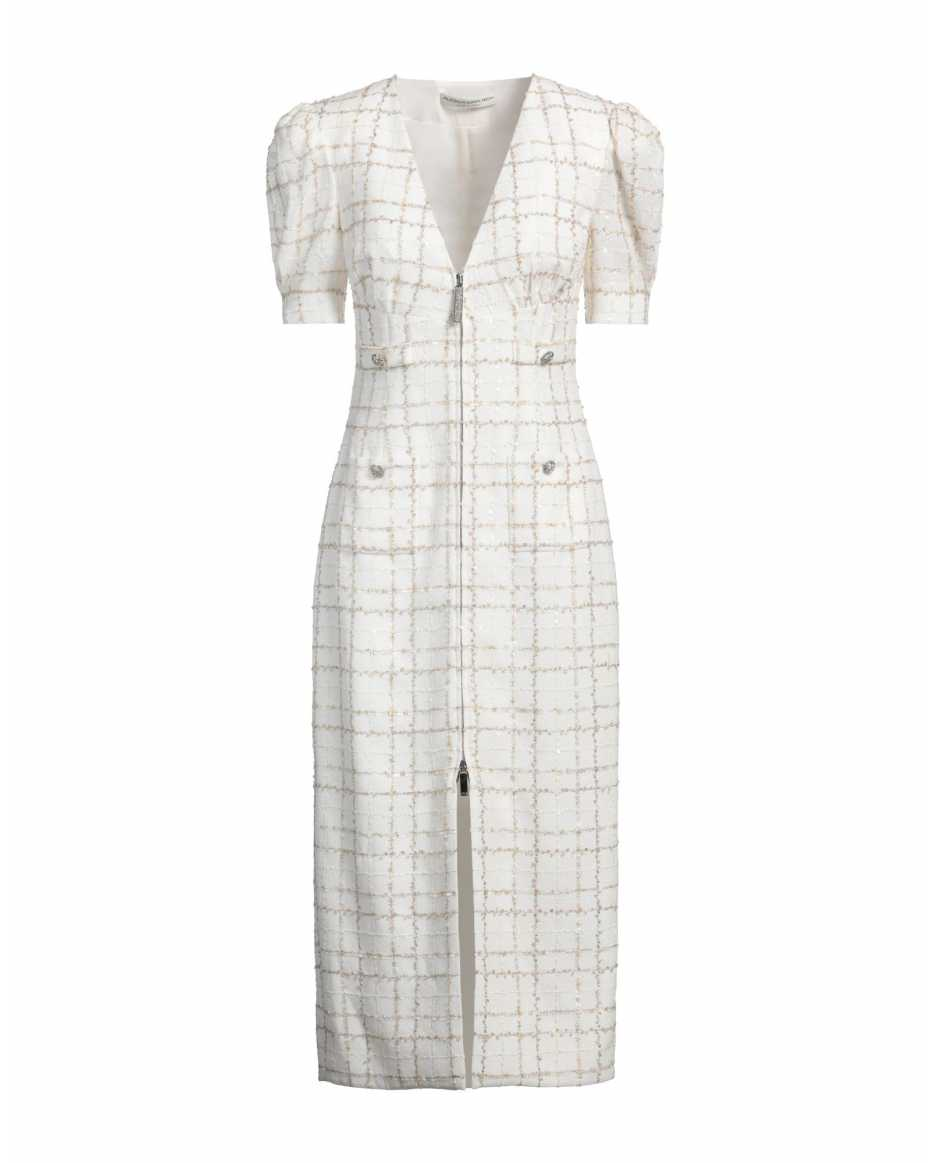
Recommend 02: Akris Punto - Chunky Tweed Sheath Dress with Fringed Hem
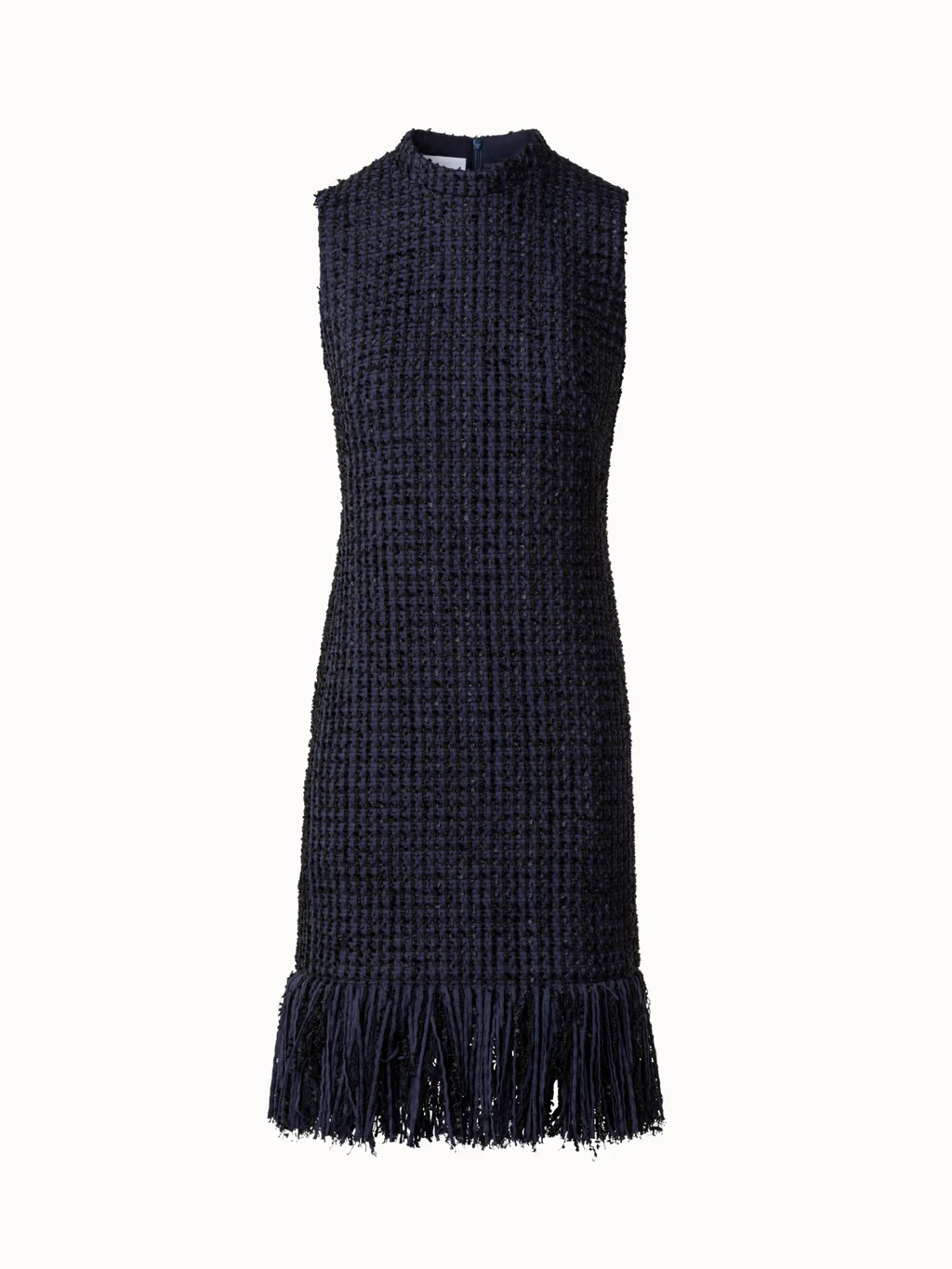
Recommend 03: Alexis - Michel Dress
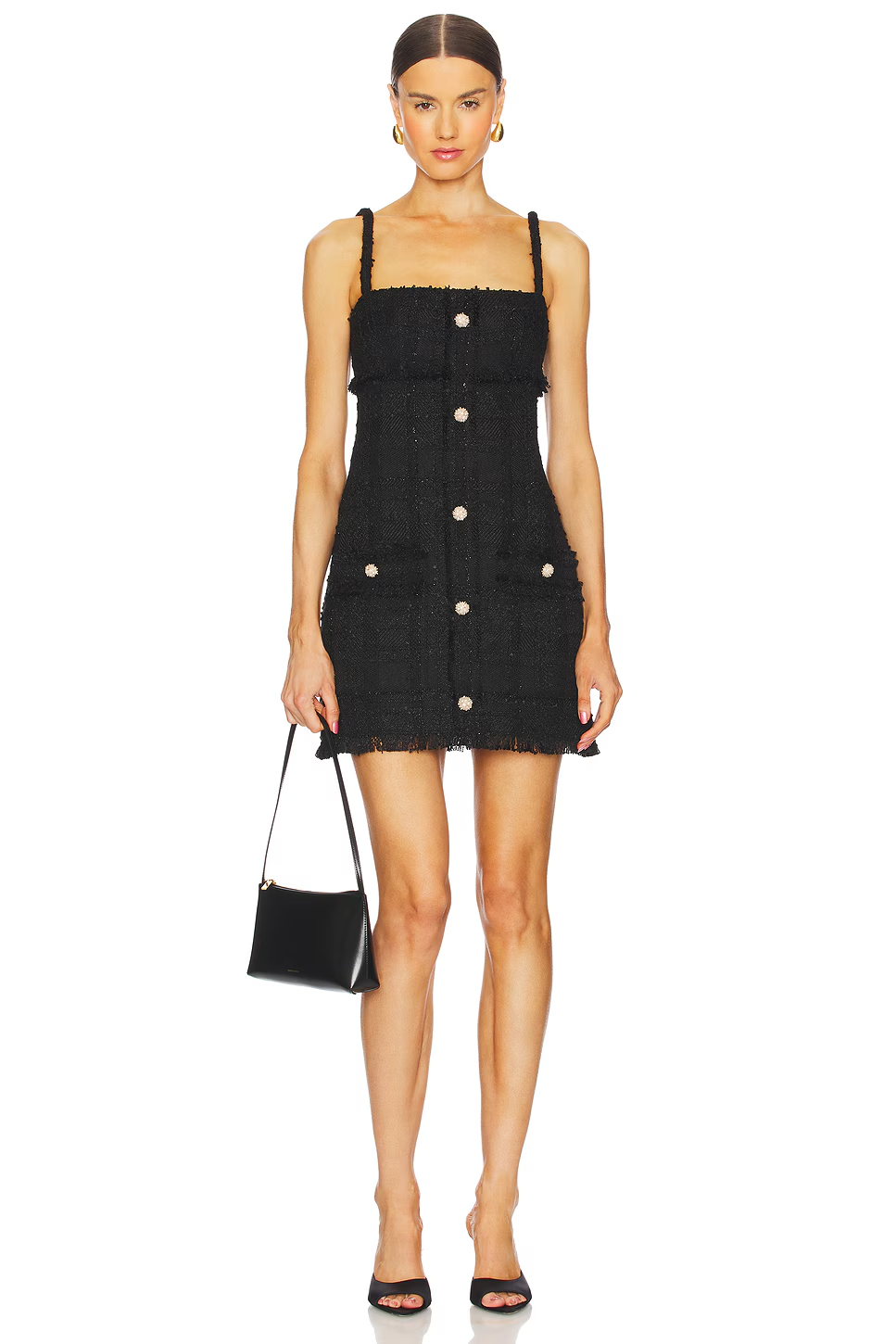
Bag
Tweed bags are where practicality meets panache, blending the fabric’s tough roots with sleek design. Imagine a structured Harris Tweed tote, its earthy green-and-brown weave paired with leather handles, roomy enough for a laptop yet chic enough for a dinner date. These bags range from minimalist crossbody clutches to slouchy bucket bags, each showcasing Tweed’s tactile allure.
Recommend 01: Amiri - Handbag
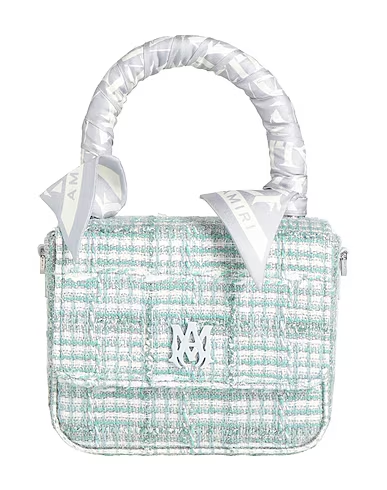
Recommend 02: Aspinal of London - Tweed Paris Top-Handle Bag
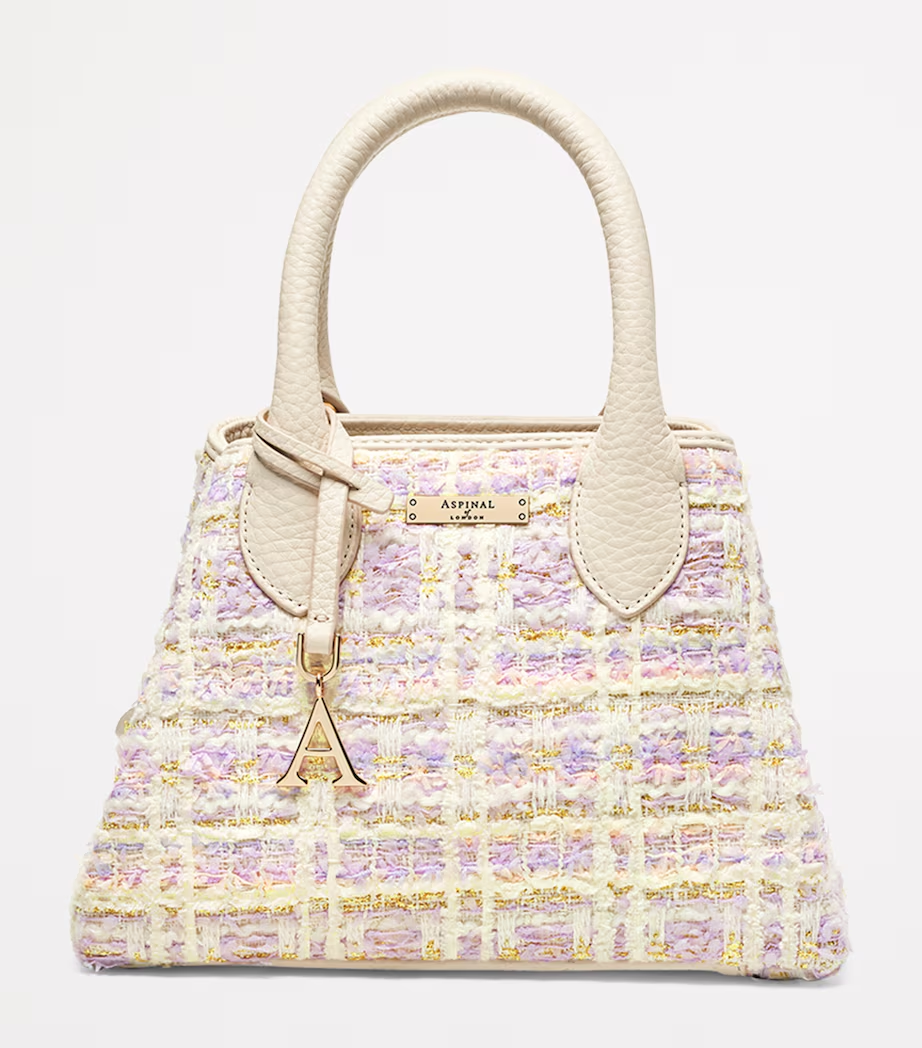
7. My Point
After many years in fashion, I’ve found few fabrics rival Tweed’s staying power. My first Harris Tweed jacket, spotted in a dim London shop, felt like history in my hands. As a designer who’s outlasted countless fads, I see Tweed as more than material. It’s a masterclass in authenticity and defiance. Its handwoven grit, from Donegal’s flecks to Shetland’s softness, carries a maker’s soul, grounding wearers whether they’re in boardrooms or bars. Tweed rebels quietly, rugged yet chic, fitting rockstars and CEOs alike. Best of all, its woolly durability pushes back against fashion’s waste, aging gracefully in a throwaway world. To me, Tweed proves qualits.